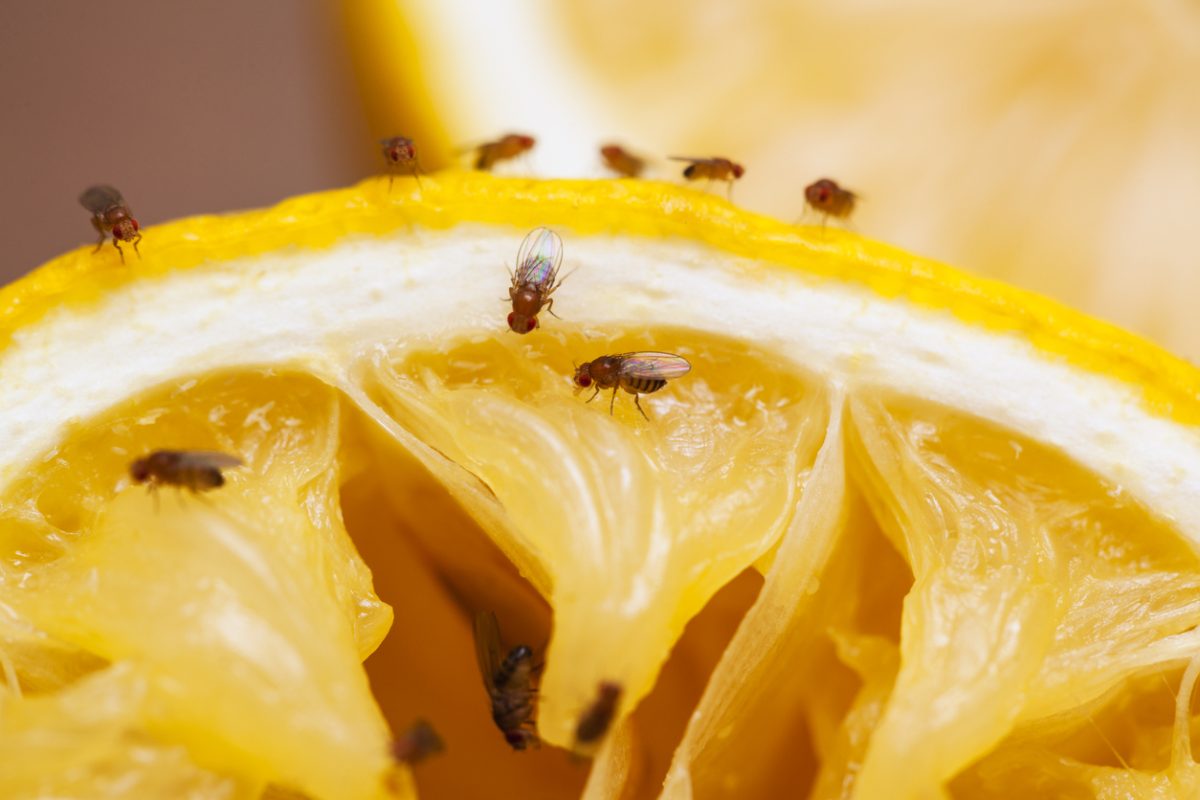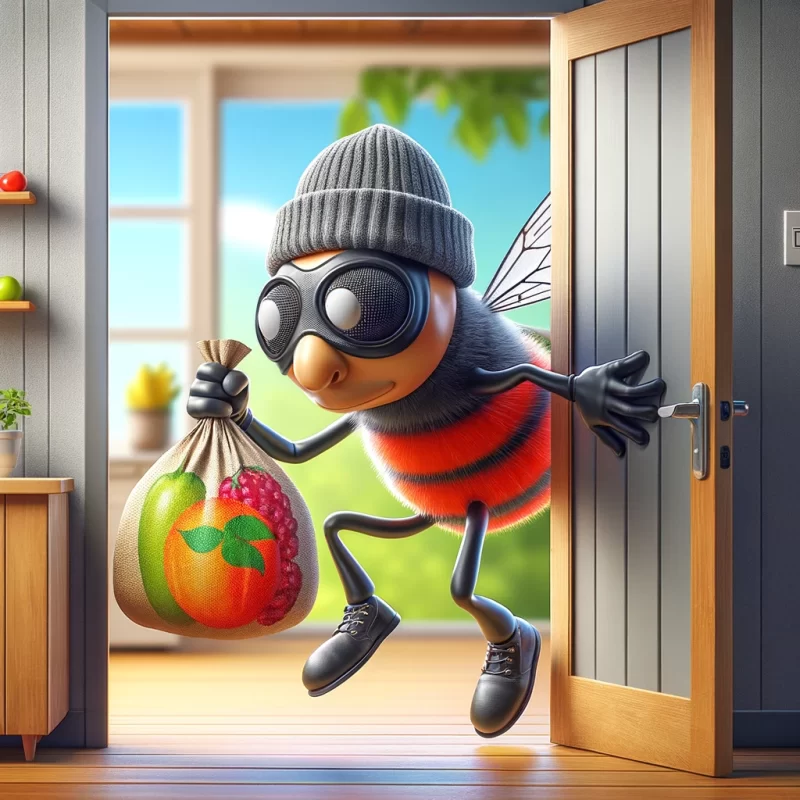Fruit Fly Facts
Where Do Fruit Flies Come From?
Ever wondered where fruit flies come from, especially how they appear seemingly out of nowhere in your home? These tiny pests, known scientifically as Drosophila melanogaster, are not just annoying but are a marvel of nature, capable of turning a peaceful home into a site of a fly infestation seemingly overnight.
Key Takeaways:
- Fruit flies, or Drosophila melanogaster, are attracted to fermenting fruits and vegetables, which they use for laying hundreds of eggs.
- They can enter homes through tiny openings or come in with purchased produce.
- Rapid life cycles allow fruit fly eggs on produce to develop into a full infestation quickly under warm conditions.
- Not all fruits cause infestations; environmental factors like temperature, humidity, and swift disposal of food play roles in egg development.
- Infestations can be prevented by removing attractions such as exposed ripe fruits, regular garbage disposal, and cleaning spills of sweet liquids.
- Homemade traps using apple cider vinegar and dish soap can be effective in managing fruit fly populations.
- Maintaining cleanliness and proper food storage are key to preventing fruit fly infestations in the home.
If you are curious about whether fruit flies pose any health risks, read our full article on ‘Are Fruit Flies Harmful?‘.
The Origins of Fruit Flies

Fruit flies come from the same place as many of nature’s smaller miracles: the great outdoors. They are naturally attracted to fermenting fruits and vegetables, which emit a sweet, decaying scent that signals the presence of ripe or rotting organic material—perfect for laying eggs. Female fruit flies can lay hundreds of eggs on the surface of aging fruit, in garbage disposals, or inside garbage cans where food waste provides an ample food source.
To learn more about their reproductive habits, check out our detailed article on Where do fruit flies lay eggs?.
Entry into Homes
So, how do they get inside your house? Fruit flies are drawn in by the scent of ripe bananas, food waste, and any fermenting or rotting fruit. Once a small colony takes flight inside your home, especially during warmer temperatures, it doesn’t take long for them to become a noticeable nuisance. They can slip in through tiny openings around windows and doors or are sometimes inadvertently brought into the home on fruits and vegetables from the store.
The Mystery of Sudden Infestations

The reason fruit flies seem to appear out of nowhere is due to their rapid life cycle and the fact that fruit fly eggs can be invisibly present on produce. Under the right conditions—primarily warmth and availability of food sources like overripe or rotting fruit and organic material in drains—these eggs can hatch into larvae, which then quickly develop into adult fruit flies. This cycle, from egg to adult, can happen in just a week, making it seem as though they’ve appeared suddenly.
Why Not Every Fruit Causes an Infestation
Not every piece of fruit will cause a fruit fly infestation. This is because the conditions have to be just right for the eggs to hatch and for larvae to survive and develop into adults. Factors such as temperature, humidity, and the presence of other food sources play a significant role. Additionally, if fruits and vegetables are consumed or disposed of before fruit fly eggs have a chance to hatch and mature, an infestation can be avoided.
Preventing and Managing Infestations
Preventing a fruit fly infestation revolves around removing sources that attract fruit flies. This includes disposing of garbage regularly, not leaving ripe fruit out for long periods, and cleaning any spills of beer, soda, or other sweet liquids that could feed fruit flies. Catching fruit flies can be effectively managed with traps made from apple cider vinegar, dish soap, and a bowl, leveraging their attraction to the vinegar’s fermenting scent while the dish soap breaks the surface tension to trap them.
The Bottom Line
Fruit flies are a common household pest attracted to fermenting and rotting fruits and vegetables. While they can be brought into homes on produce, not every piece of fruit leads to an infestation. Understanding what attracts fruit flies and taking steps to remove these sources can help manage and prevent fruit fly populations from taking over your home. By keeping your living space clean and free of the fruits that female fruit flies seek out for laying eggs, you can maintain a fruit fly-free environment.

Hi there! I’m Beliz Güner, and welcome to my world of innovative solutions for fruit fly challenges. Though I hail from Turkey and have a background in interior design, my true passion lies in tackling the persistent issue of fruit flies. My journey has been anything but ordinary, as I’ve transitioned from creating beautiful spaces to devising effective fruit fly traps.
My interest in DIY home projects and product reviews has fueled my desire to share knowledge and personal experiences with others facing similar frustrations. Through my blog, I aim to empower you with the tools and insights needed to combat fruit fly invasions, drawing on my unique blend of design creativity and hands-on experimentation. Join me as we explore the most effective strategies to reclaim our homes from these unwelcome guests.

